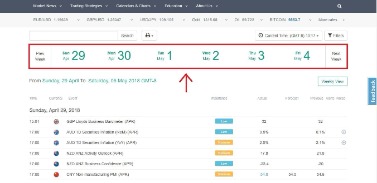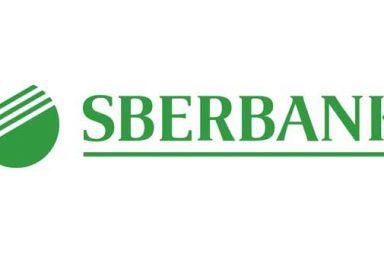
A symmetrical triangle is a chart pattern that is created when the price action of a security forms two converging trendlines. These trendlines are created by connecting a series of lower highs and higher lows, and they typically converge at a point known as the apex. The symmetrical triangle is considered a neutral pattern, which means that it can be found in both uptrends and downtrends.
Take profit target should be located at 50%, 61.8%, or 78.6% levels. Think of the lower line of the triangle, or lower trendline, as the demand line, which represents support on the chart. At this point, the buyers of the issue outpace the sellers, and the stock’s price begins to rise. The supply line is the top line of the triangle and represents the overbought side of the market when investors are going out taking profits with them. The Breakout of the chart pattern will decide either this pattern will act as a continuation chart pattern or reversal chart pattern because of symmetrical price behavior. It works in all timeframes but we will recommend you to trade any timeframe above 15M.
Volume Patterns
After a recent swing high, the market starts making the lower highs, while on the other side of the market we witness the higher lows. Hence, this consolidation phase within a downtrend is formed within the symmetrical triangle. The symmetrical triangle is a consolidation chart pattern that occurs when the price action trades sideways.
What are Triangle Chart Patterns? Types, How To Trade & More – Trade Brains
What are Triangle Chart Patterns? Types, How To Trade & More.
Posted: Wed, 16 Aug 2023 07:00:00 GMT [source]
However, if they waited for several candles to form in the breakout direction, the price wouldn’t reach the target, and the position would be closed by a stop-loss order. The consolidation phase is marked by multiple tagging of the two trend lines on both sides, as the buyers and sellers attempt to break the triangle. Finally, how to trade symmetrical triangle the sellers are able to push the price action below the triangle as two converging lines almost touched. In this example, the symmetrical triangle acts like a continuation pattern that simply helps to extend the downtrend further lower. Once the triangle has been identified, traders will watch for a breakout to occur.
This way, traders get tempted that there is a breakout on the chart. With these aspects of the pattern out of the way, let’s now have a closer look at the steps some traders take when trading symmetrical triangles. This involves everything from spotting the pattern, to deciding where to put the stop loss and profit target. The first signal of the strong breakout is increased trading volumes.
Ascending Triangle Pattern: Full Guide
After the upside breakout, it proceeded to surge higher, by around the same vertical distance as the height of the triangle. In this case, we would place entry orders above the upper line (the lower highs) and below the support line. In the chart above, you can see that the price is gradually making lower highs which tells us that the sellers are starting to gain some ground against the buyers. They keep putting pressure on that resistance level and as a result, a breakout is bound to happen.

If the higher timeframe is in a downtrend, then it will likely breakdown lower. If the price breaks the highs, set your stop loss 1 ATR below the swing low. Once it’s formed, you can long the break of the highs and have your stop loss below the swing low.
Setting a realistic target for your Symmetrical Triangle trade
As outlined earlier, the symmetrical triangle consists of the two converging trend lines as the price action moves sideways. It’s important that we correctly identify the symmetrical triangle chart pattern and draw the lines precisely in order to make sure that we don’t miss out on a breakout/down. In a USD/CAD four-hour chart lower, we see a downtrend as the sellers push the market lower.
- Hence, we make a difference between the bullish symmetrical triangle pattern and a bearish symmetrical triangle pattern.
- Symmetrical triangles provide little, if any indication as to which direction the stock will ultimately breakout.
- Because below 15-minute timeframe, it will become difficult to identify false breakouts due to the high frequency of trading in lower timeframes.
- However, the close may occur far away from the trend line, which means that your take profit window has narrowed, while the amount of pips you are risking has increased.
- The price action trades sideways with lower highs and higher lows and eventually, the two converging trend lines meet.
A Symmetrical Triangle chart formation has been brewing since earlier this year. Now, AUD/JPY is quickly running out of space to consolidate between rising support and falling resistance. The direction of the breakout could be key for preceding the broader trend.
Market Analysis: AUD/USD and NZD/USD Could Start Fresh Increase
Although they can also signal reversals, symmetrical triangles are a sign of consolidation and typically lead to the continuation of the past trend. In the EUR/GBP 30-minute chart above, we can see the price consolidation phase following a bullish movement. The price action trades sideways with lower highs and higher lows and eventually, the two converging trend lines meet. The size of a symmetrical triangle pattern affects its trading implications in a few ways. First, the larger the triangle, the more reliable it is as a predictor of future price movement.
In the chart above, you can see that the buyers are starting to gain strength because they are making higher lows. If you had placed another entry order below the slope of the higher lows, then you would cancel it as soon as the first order was hit. In this example, if we placed an entry order above the slope of the lower highs, we would’ve been taken along for a nice ride up. ThinkMarkets ensures high levels of client satisfaction with high client retention and conversion rates. No matter your experience level, download our free trading guides and develop your skills. The total price move during the second half of the trade equals to 0.89%.
This means volatility in the market is shrinking and a sign the market is likely to breakout, soon. Elearnmarkets (ELM) is a complete financial market portal where the market experts have taken the onus to spread financial education. ELM constantly experiments with new education methodologies and technologies to make financial education effective, affordable and accessible to all. Before placing any trade, always know the amount you are willing to risk. If you need to risk more than you intended, simply avoid taking the trade and move forward to a much better one. The value of shares and ETFs bought through a share dealing account can fall as well as rise, which could mean getting back less than you originally put in.
In descending triangle chart patterns, there is a string of lower highs that forms the upper line. The lower line is a support level in which the price cannot seem to break. Now we will combine all the information we discussed above into a profitable symmetrical triangle trading strategy.
- Trade up today – join thousands of traders who choose a mobile-first broker.
- It’s a bilateral pattern, meaning it provides buy and sell signals.
- Never forget that confirmation is essential; a pattern can only be considered confirmed when the support or resistance level has been broken and tested.
- The symmetrical triangle is considered a continuation pattern because it usually forms during a period of consolidation, when the market is “chopping” around within a defined range.
- If the price does a pullback, then go long on the break of the highs.
- In order to measure the symmetrical triangle size, you first need to extend the shorter side to match the length of the other side.
After all, the direction in which the triangle will break is unknown before the appearance of the triangle. For this reason, if you see the price peeking through one of the levels, this doesn’t mean that you have a breakout. In many of the cases it might be better to wait for the price to develop, before concluding that there is a breakout.
But this level is inclined, so, the more you move to stop the left, the larger the distance is between the stop and the entry price. So, in the case of a falling wedge, a breakout to the upside on higher https://g-markets.net/ trading volume represents a buying opportunity as a new bullish trend gets underway. We could place a long trade at a price marginally above the upper trendline at the pointed end of the wedge.
Traders when using symmetrical triangles patterns, look for a high volume movement in a share price so the breakout is confirmed. In this case, a trader will enter a selling position when the price breaks the breakout level (in the chart, confirmed with the 61.8% level). In the EUR/GBP 30-min chart below, we can see how the two converging trend lines are formed following a bearish trend and eventually connect. Here, in this article, we are going to explain everything you need to know about the symmetrical triangle chart pattern. The direction of the breakout can be used to help identify which way the market is likely to move.
